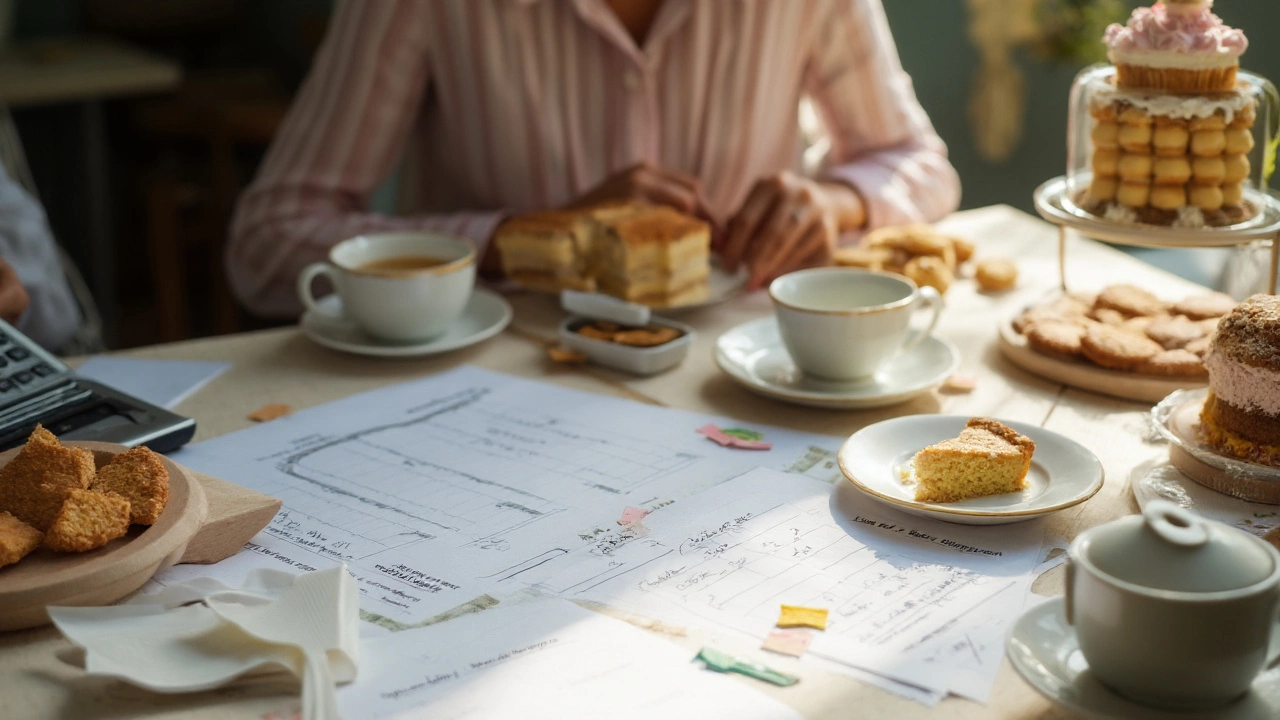Wedding Cake Calculator: How to Get the Right Size and Price
Planning a wedding means juggling a lot of numbers, and the cake is no exception. A cake calculator takes the guesswork out of figuring out how many slices you need and how much you’ll pay. Below you’ll find a simple step‑by‑step method that works whether you’re buying a two‑tier classic or a towering five‑tier masterpiece.
Step 1: Count Your Guests and Slice Size
Start with the total number of guests who will be eating cake. Most couples invite between 80 and 150 people, but the number can vary. Decide how big each slice should be – a standard wedding slice is about 2 inches wide and 2 inches tall. If you want generous portions, add a half‑inch to each side. Multiply the number of guests by the slice size to get a rough idea of the cake’s total volume.
Step 2: Choose Tier Height and Number of Tiers
Each tier usually rests on a 4‑inch cake board. A typical tier is 4‑6 inches tall. To keep the cake stable, the bottom tier should be the widest, with each upper tier about 2‑3 inches smaller in diameter. Use this simple rule: for every 25‑30 guests, add an extra tier. For example, 80 guests might need a two‑tier cake (8‑inch bottom, 6‑inch top), while 150 guests often need three tiers (10‑inch, 8‑inch, 6‑inch).
Now plug these numbers into an online cake calculator or a spreadsheet. Enter the guest count, desired slice size, and tier dimensions. The tool will spit out the total cake volume in cubic inches, which you can convert to pounds of batter (roughly 1 pound per 28 cubic inches).
Step 3: Estimate the Cost per Pound
Bakery prices vary, but a good baseline is $4‑$6 per pound for a basic buttercream cake and $6‑$9 per pound for a fondant or custom‑decorated cake. Multiply the total pounds by the cost per pound to get a base price. Add extra charges for special flavors, fresh flowers, or intricate sugar work – usually $50‑$150 per additional design element.
Don’t forget delivery and set‑up fees. Many bakers charge a flat $100‑$200 for transportation, especially if the venue is far from their kitchen.
Step 4: Factor in Waste and Leftovers
It’s common to have a few extra slices for staff or unexpected guests. Aim for about 5‑10% extra cake. Most calculators let you add a “waste factor” – just type in 5% and the total poundage will increase slightly, giving you a safety buffer without over‑ordering.
Step 5: Run the Numbers and Compare
Once you have the total cost, compare it with your overall wedding budget. If the number looks high, consider trimming the tier count, simplifying decorations, or opting for a simpler frosting. You can also ask the baker for a “cut‑down” version that still looks impressive but uses less batter.
Using a cake calculator isn’t about micromanaging every bite; it’s about feeling confident that you’ll have enough cake for everyone without breaking the bank. Grab a free online calculator, plug in your guest list, and watch the numbers fall into place. You’ll walk into the reception knowing the cake will be just right – big enough to impress, affordable enough to keep the rest of your budget on track.
What Percentage of Wedding Guests Eat Cake? Real Numbers, Rules of Thumb, and How Much to Order
Wondering how much cake to order? See the real percentage of guests who eat cake, why it varies, and a simple calculator to nail your wedding cake quantity.
Read more